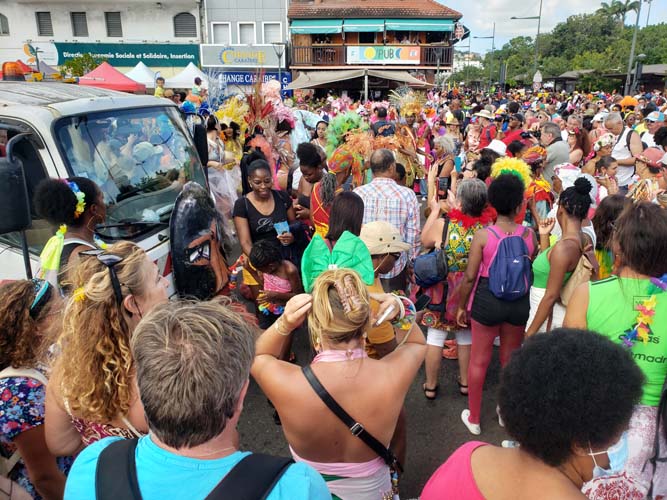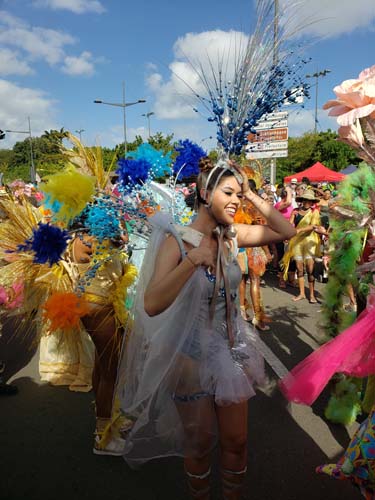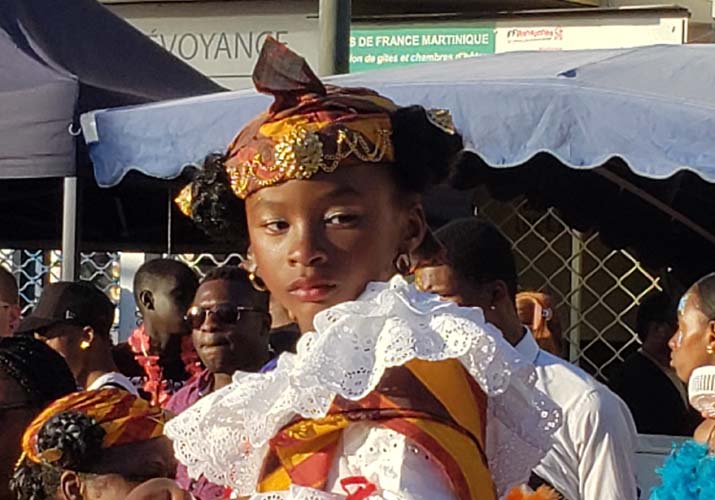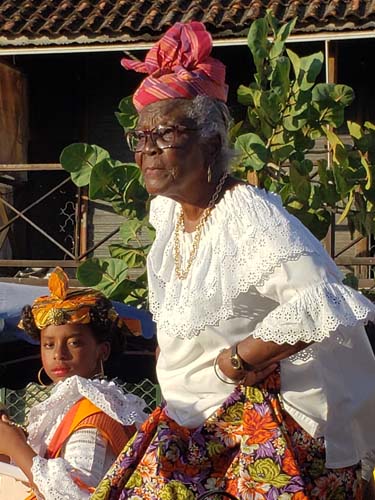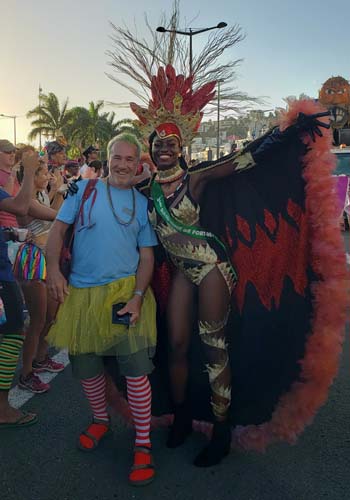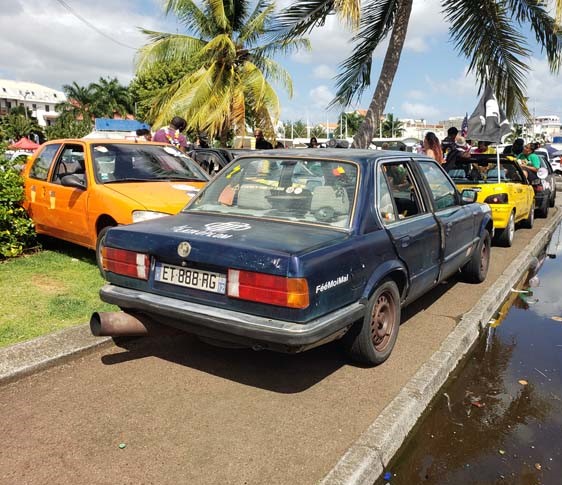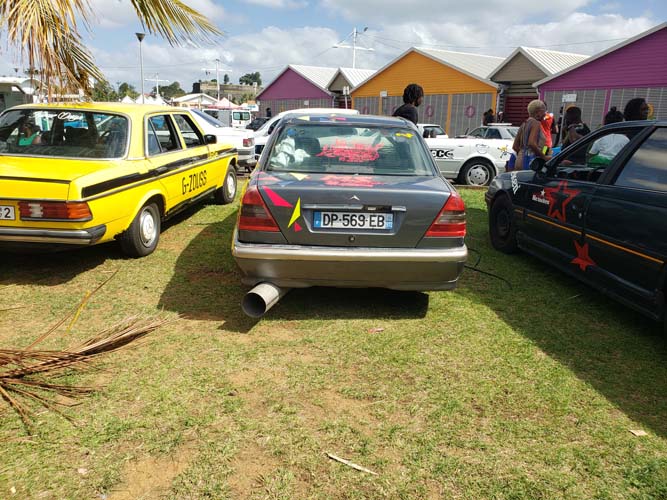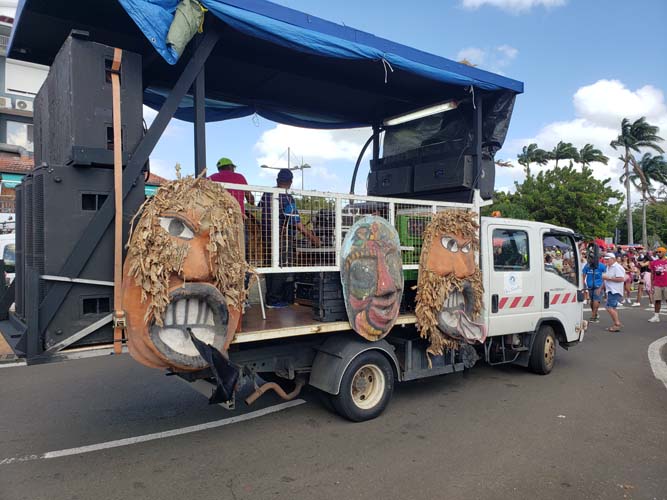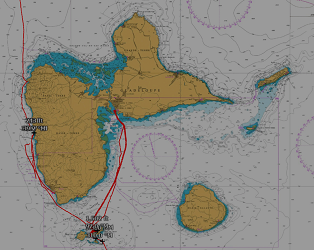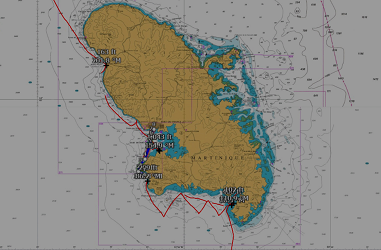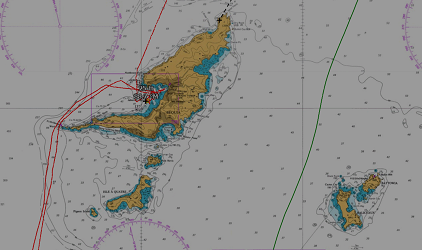Carnaval (14 minutes video)
The origins
The origin of the name, Carnaval goes back to the French hoiday of Mi-Careme. Starting with Ash Wednesday, the catholics would have 40 days of lent. Mardis Gras, fat tuesday, is nameed after the tradition of eating well in preparation for a long period of lent and fasting. Mi-Careme, 20 days into the 40 day lent, was a means of coping with the length of this austerity and halt all the deprivations for a night, this practice becoming more popular as rigid adherence to the church views attenuated some after the middle ages. Some claim that mi-careme was related to a dance offered to the young wowen in provincial cities around lent. More practically, some believee that food such as eggs would spoil after 20 days, and the break was a practical approach. Mi Careme, Carnaval, Mardis Gras all have some ties to the lent period, and carnaval is the one that dominates the caribbean.
Mardi Gras
Carnaval is celebrated throughout the Caribbean from January through August but it remains the weekend prior to Ash Wednesday in Dominica, Martinique, Guadeloupe, St Martin, St Barthelemy, Cariacou, as well as the dutch influenced ABCs: Aruba, Bonaire, Curacao. Oddly, Cariacou celebreates at the same time, but Grenada, its parent country, celebrates in August. Sint Marteen uses late April or early May while other dutch islands use the weekend preceeding ash wednesday. So, Carnaval is whenever, it seems not to matter as long as there is one.
Lorem ipsum dolor sit amet, consectetur adipisicing elit. Dolorem reprehenderit commodi excepturi, dolor alias nam, incidunt ad quae facere assumenda dolorum laborum temporibus, debitis praesentium aliquid nemo cum iure qui.
Culture Mixer
In martinique, Carnaval was influenced with african and native culture which celebrates harvests and fertility, in spring, and colonial habits. In the 17th century, colonists brought their garments with them to the new world, and costume parties were common at the holidays. Most parties were indoors. Then Slaves were not allowed to participate in these events but eventually were commissioned as performers for their owners. SUbsequently slaves achieved freedom, and the carnaval became a people's movement, which caused the ex-colonists to either ban masks, or try to ban carnivals. Over the years, the masks came back, the carnaval today is probably the most egalitarian event in these islands, wehere rich, poor, and all races mix it up in the street and have plain fun, without much alcohol or routiness, an event to share with friends, family, tourists and local residents. No one can possibly be in a bad mood at such an event which, to me, is an example of the positive attribute we humans can exhibit.
Themed Days have meaning
Carnaval in Martinique starts officially Sunday, but there are some parades on Saturday. Saturday is also an informal parade in small towns, and a parade of cars and floats may take place. The louder the car stereo, the better, and we saw some cars with trunks and doors full of speakers and multiple alternators to power that mess. On Sunday, the fist official day, sa majeste Vaval, the carnaval King, emerges into the streets, symbolizing some form of evil, he is fabricated of combistible organic materials and his sole purpose is to reign over the carnaval, only to be burned in effigy at the end. He is a representation of the evils of hell, and a reminder to the believers of the fires of hell fate that follows sins. In some way as well, Vaval is a representation of opression and authoritarian power over the people, making a political statement as well.
Four Days of Partying
Day 2 of Carnaval will be a day of humorous ridicule and parody . Men often dress as brides and women as grooms, it is also known as wedding day. Extravagance is key, and parades continue well into the night. Because of the amount of time partying, the people are granted Pyjama day on Tuesday, a celebration named "vide" and a videe means an emptying, a purge, as the streets are purged.
Day 3 at dawn, people empty the streets but show up in Pyjamas, for the Pyjama parade Then it starts again, as devil day. Red and black are the colors of choice, many dress as devils, and other elaborately devilish costumes. There is a sport in martinique called "whipping" and the "fouettards" (whip masters), generally young adults or young men, crack their home made whips by causing the ends to break the sound barrier, following many weeks of training prior.
Day 4, ash wednesday, is the day of the dead.More parades, and costumes set in black and white. ALl this is followed in the evening by the incineration of Vaval, which will serve as a symbol of return to normal life.
Conclusion
We did not participate in everyday, but we did dress up for the first day as most people do, and attended day 4. the big impedance for us were the ferries. Anchoring in Anse a l'Anne, or Anse Mittan, was probably preferable to the Fort de France anchorage where the ferry channel was filled with boats anchored where they did not belong, but the ferries were unreliable, overcrowded, and understaffed. A line of one hour or more was not unusual, so returning to the ferry terminal around 730 pm was imperative.
I would characterize Carnaval as a don't miss event. We saw very few drunken people ( except for some Aussies british, and Americans), and given the size of the crows, the event felt and was perfectly safe, focused on fun, and continuwous partying, without any inhibitions on dress code.
